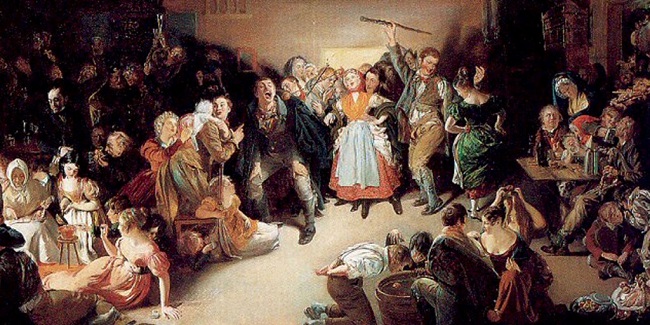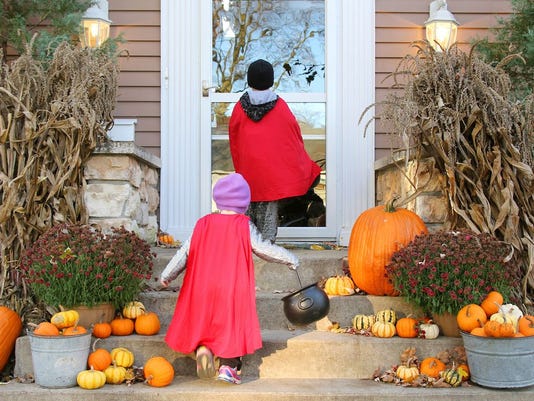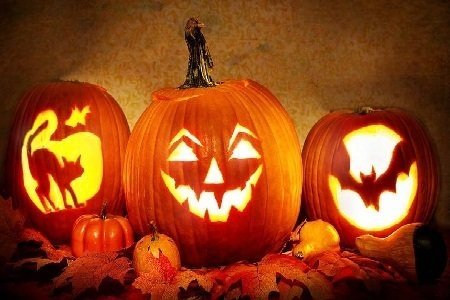Halloween is a cultural mashup that has a rich history that includes a lot of love. Halloween has many nicknames such as All Hallows' Eve, All Saints' Day, Witches Night, Lambswool, Snap-Apple Night, Samhein, and Summer’s End.
In the eight century, Pope Gregory III elected the 1st of November as a time to upheld and honor all saints, and this progressed the ritual and incorporated the traditions of Samhein.
The evening before Halloween was known as All Hallows Eve and later Halloween. Over time, this ritual became famous and evolved into a once in a year event where people would go for the trick or treat, carving jack-o-lanterns, festival gathering, eating sweet treats, and wearing costumes.
Origin Of Halloween
The place where Halloween was originated was in Ireland, which dates back to the 18th century. Halloween’s background is dated back to the ancient Celtic festival of Samhein. The group of people named Celts, who lived 2000 years ago, renowned their New Year on November 1. The first known reference of trick-or-treating in regard to North America occurred in Blackie, Alberta, Canada, in 1927.
This day manifests the end of summer and the harvest of the crops in the field. After the summer was over, it was the start of dark, cold winter, a time of year that was often associated with human death. Celts believed that on the night before the New Year, the frontier between the worlds of the living and the dead became open at that time, making the ghost of the dead reimbursed to earth. By this belief, they renowned Samhein on the night of October 31 to mark the day of Halloween.

On the 31st of October, Celts renowned Samhein that marked the origin of Halloween (©: theancientweb.com)
In addition to causing anxiety and damaging crops in the day of winter, Celts thought that the manifestation of the otherworldly spirits made the druids and Celtic priests easier to make divinations about the future. This foresight was an important aspect, source of comfort and route during the long, dark winter.
To honor the event, priests and druids built huge sanctified bonfires where the people would gather to burn crops and compromise animals as sacrifices to the Celtic deities for their safety. During the celebration, the Celts wore costumes, typically comprising of animals head and skins, where they tell each other’s prosperities.
By the time progressed and reached the 9th century, the guidance of Christianity had spread unto the Celtic lands where it steadily blended and bested older Celtic rites. In 1000 A.D., the church made November 2 all souls’ day to honor the dead. After that, the church endeavored to replace the Celtic festival of the dead into a related church-sanctioned holiday.
All soul’s day was distinguished similarly to Samhein, with huge bonfires, carnivals, and covering their bodies as saints, angels, and devils. The All Saints ’ Day was hence fore named All-Hallows, and the night before it, the traditional night of Samhein, the Celtic region began to be called All-Hallows Eve and eventually Halloween.
How Halloween Become Famous?
Halloween was much more shared in Maryland and the southern colonies and was extremely inadequate in colonial New England because of the unyielding protestant belief system.
As the opinions and traditions of different European ethnic groups and the American Indians interconnected particularly, a new varied of the American version of Halloween began to emerge. The first celebration included play parties where the event was held to celebrate the harvest, share stories of the dead, tell each other’s fortune, dance, and sing with happiness.
Foreign Halloween festivities also involved the telling of ghost stories about the dead and mischief-making of all kinds of stuff. By the middle of the 19th century, autumn festivities were common, but the celebration of Halloween was limited.
In the second half of the 19th century, America submerged with new immigrants bringing their beliefs and traditions alongside them. These new immigrants, especially the millions of feeling Irish from the Irish potato famine, helped to contribute and commercialize the Halloween to be celebrated nationally worldwide.
Halloween Costumes, Makeup, And Outfit Ideas
Halloween costumes, outfit ideas, and makeup are the type of clothes that impersonate mystical and scary beings. Costumes are occasionally of monsters like vampires, werewolves, zombies, ghosts, witches, trolls, goblins, the devil, and many more. It can also be used to imitate science fiction-inspired characters such as aliens, superheroes, and alike. The outfit ideas for the costume can be generated from these mystical beings, ghosts, science-fiction, animals, and much more.
The makeup for Halloween can be distinguished by these costumes and outfit ideas suitable for the face. These costumes are hand-made, as well as; some can be bought all around the world. These costumes can be wear by adults, children, teenagers, and couples.
Deriving from European civilizations, Americans began to dress up on costumes and go house to house, asking for food, money, and sweets, a practice that eventually is renowned today as trick or treats. Young women believed that they could deific the name or appearance of their future husband by doing tricks or rituals with yarn, apple parings, or mirrors.

Children going treat or treat wearing Halloween costumes (©usatoday.com)
In the late 1800s', Halloween was made an authorized holiday, which included community and neighbors, friends, families and especially children and adults, where they spend the day talking about ghosts, pranks, witchcraft, making costumes, lighting bonfires, playing games, going into people’s house for trick and treat.
The ritual initiated in a way that Celtic and other European people hid from the spirits who reimbursed at the time of Halloween. People wear masks and outfits when they leave their homes after dark, so the ghosts or otherworldly beings think that they are of the same category of beings. People place bowls of food outside to keep the ghosts out of their houses and make them happy.
Decorations, Treats, And Food
Decorations for homes on Halloween are a type of symbol where several themes of events like making the house look like a haunted place where ghosts dwell, including themes of death, evil, and mythical beings. It is already popular nowadays for children and adults where they wear costumes and go for these houses for tricks and treats, sweets, money, and food.
Creating and decorating the perfect haunted house is the main attraction of Halloween, where neighbors, children, and adults can stop by and stare in admiration, making it the spotlight while doing tricks and treats.
The decorations for Halloween of the house can be made up of Halloween animations such as twisted clowns, witches, zombies, and scarecrows that can be moved due to animatronics. Similarly, Halloween props, lights, home décor, and fog machines can be used, where the house can be focused to look like a haunted place where the ghosts dwell.
The type of food that is mainly taken on Halloween is sweets, but there are many other types of food and stuff that can be used to entertain oneself and guests by throwing parties and have a gathering. These foods include boxty (potato pancakes), colcannon, soul cakes, cider, toffee apples, bonfire nights foods, and drinks.
Likewise, the Halloween recipes can be formed by oneself, making the food look like otherworldly beings such as pumpkin cinnamon rolls, seeds, perfect caramel apples, Mac-O' lantern, cheese bowls, black magic cake, haunted gingerbread house, mummy hand pie, and much more. These foods and treats are especially popular in Halloween and can be used to treat in parties and homes making or buying them.
Halloween Facts
- The fear of Halloween is referred to as Samhainophobia, where the ghosts dwell. Covering up in costumes was once a way to hide oneself from ghosts during Halloween. It is even believed that if a child is born in Halloween, he may possess the ability to talk to spirits.
- Cats have been a part of history for Halloween. The owl is a popular Halloween image during feudal Europe where they were supposed to be witches, and when the owls make a sound, it meant someone was about to die.
- The colors that are typically associated with Halloween are black, orange, and gold. Orange symbolized the strength and endurance, gold stands for harvest and autumn, and black is focused on death, darkness, and sickness that links the boundaries between life and death. Also, a widespread Halloween symbol 'scarecrows' that signifies the ancient agricultural roots.
- During the carnival of Samhein, bonfires were lit to guarantee the sun would return after the long hard winter, where druids and priests would sacrifice the cattle into the flames and crops. Thus, marking the term bonfire as in “Bone fire.”
- The first Jack O’ lanterns were made from turnips.
- Halloween is the second highest-earning profitable holiday after Christmas.

